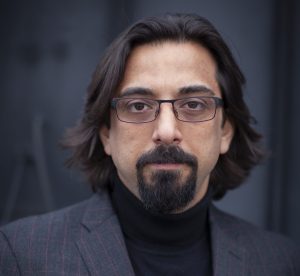“It’s a reason to celebrate but it
also has its challenges,” said Denmark’s Minister for
Employment, Mette Fredriksen, during the launch of the ‘European year
for active ageing and solidarity between generations 2012’.
“In 2017 there will be fewer
young people in working life than people who are outside of the labour
market, and the number of over-65s is rising.”
She painted a true but for many worrying picture of Europe’s
demographic development.
Denmark holds the EU presidency and staged its opening conference on
the theme in Copenhagen in January with two EU commissioners and three
ministers present. Since then the European year has been launched in
several countries.
In Copenhagen the ageing society was presented in terms of the
impact it will have on health, welfare and work. Active ageing means
different things, like the importance of physical activity for health
and wellbeing in older age and new ways of helping those in need of
care. If older people stay healthy and independent for longer, it will
benefit the younger generations who must finance the welfare society.
In a time of labour shortages this will also be important in terms of
how much labour will be needed in the health and welfare sectors in
future. The Minister for Employment also focused on the opportunities
which arise from teams with workers of different ages.
Young and old together
“When older and younger people work together they complement each
other. Young people have physical strength and older ones have
experience which they can share with the young,” said Mette
Frederiksen, and used the Danish construction firm ‘Enemærke og
Petersen’ as an example of someone who, according to her:
“makes the most out of their employees of all ages.”
Mette Frederiksen pointed to politicians’ responsibilities to make
it possible and attractive for older people to stay in work for a bit
longer, and to make sure older people’s skills remain sought after. She
also underlined the importance of making people look after their own
health and be an active part of society.
The Minister for Employment put special emphasis on the need to
improve working environments in companies where the danger of burn-out
is great.
“The working environment must be adapted to make it possible for
older workers to work for longer.
“It would be a
shame if we didn’t appreciate that seniors represent a resourceful
group and that they have a lot of experience.”
She was also keen to debunk the myth that by securing that older
people keep working you put obstacles in the way for younger
workers.
Youth unemployment must come down
“Of course we need to put measures in place to combat youth
unemployment. Young people need training and they need to enter the
labour market. But this is not an either/or situation. We must keep
hold of the older workers at the same time, because in not too long
we’ll need more people in the labour market because of the
demographical development,” said Mette Frederiksen.
The European year and demographic developments have been highlighted
in different arenas in the Nordic region. Norway’s Minister of Labour,
Hanne Bjurstrøm, also focused on youth unemployment when she opened the
national conference on active ageing, organised by Oslo’s Centre for
Senior Policy.
 “Youth unemployment is the greatest threat to
“Youth unemployment is the greatest threat to
succeeding with an active senior policy, because it can influence
attitudes to older people in the labour market.”
She went on to say that Norway is relatively lucky because the
country has for many decades had a higher birth rate and higher
employment rates among older workers than countries in the EU. This she
puts down to Norway’s active policies on gender equality and
families.
“But,” she said, “this demands solidarity between generations when
fewer numbers of young people must produce wealth for larger numbers of
older people.
“The demographic development puts the generational contract to the
test. To strengthen that contract we need both parties on board – older
people must not take too many short term retirements and young people
must accept that the tasks in their working lives will be tailored to
fit an entire lifetime.”
70 a good limit
Hanne Bjurstrøm also spoke about the consequences of pensions and
retirement.
“We must tailor the pension system to allow for choices.”
Norway has initiated a pension reform with a flexible retirement age
from 2011. This means people can draw on their old age pensions when
they turn 62, while combining this with work. Today six in ten
pensioners under 67 work while drawing on their pension. The pension is
adjusted according to life expectancy. That means when it goes up,
future pensioners must work a bit longer for the same pension which
today’s pensioners draw. The retirement age for certain occupations,
like police, prison guards and defence jobs, stays at 60.
Hanne Bjurstrøm raised questions about such special age limits and
to which degree old age pensions should still be allowed to be combined
with various forms of short-term pensions – for instance sick pay. She
remained sceptical to changing the standard retirement age of 70.
“It’s not certain that the best senior political initiative is to
get rid of the 70 years age barrier.”
No one size fits all
The need for a pension reform, the importance of pensions adjusted
to living age and the possibility for a flexible withdrawal from
working life were also themes brought to the fore by the EU
Commissioner for employment, social affairs and inclusion, László
Andor, during the opening of the ‘European year for active ageing and
solidarity between generations 2012’ in Copenhagen. He was challenged
by trade unions who were worried about a labour market mis-match when
the retirement age goes up and jobs run out.
 László Andor’s main message was ”no one size fits all”,
László Andor’s main message was ”no one size fits all”,
and that there is more to active ageing than pensions.
“Active ageing is about creating better opportunities in the labour
market, but it is also about education and learning, about health and
social services and about housing and public infrastructure. And it is
about attitudes,” he added and talked about his impressions from
Denmark:
“The way in which 60 and 70 year olds in Denmark dress, behave,
cycle around and simply get on with life is so different from the
stereotypical image of an older person.
“But it is more than the bike and the clothes, 58 percent of people
between 55 and 64 are in work, while the average for the same age group
in the EU is below 50 percent. And youth unemployment in Denmark is
also lower than the EU average.
“This clearly shows that older people are not taking jobs from the
young,” said László Andor.
The differences in Europe are enormous, however. This is clearly
demonstrated by the desperation found in parts of Europe where the
economic crisis, unemployment and poverty remain focus points, and
where people take to the streets to protest against governments’ cuts
to the public sector.
“How can I go back home and report that people need to be more
active?” a Romanian journalist asked EU Commissioner László Andor.






